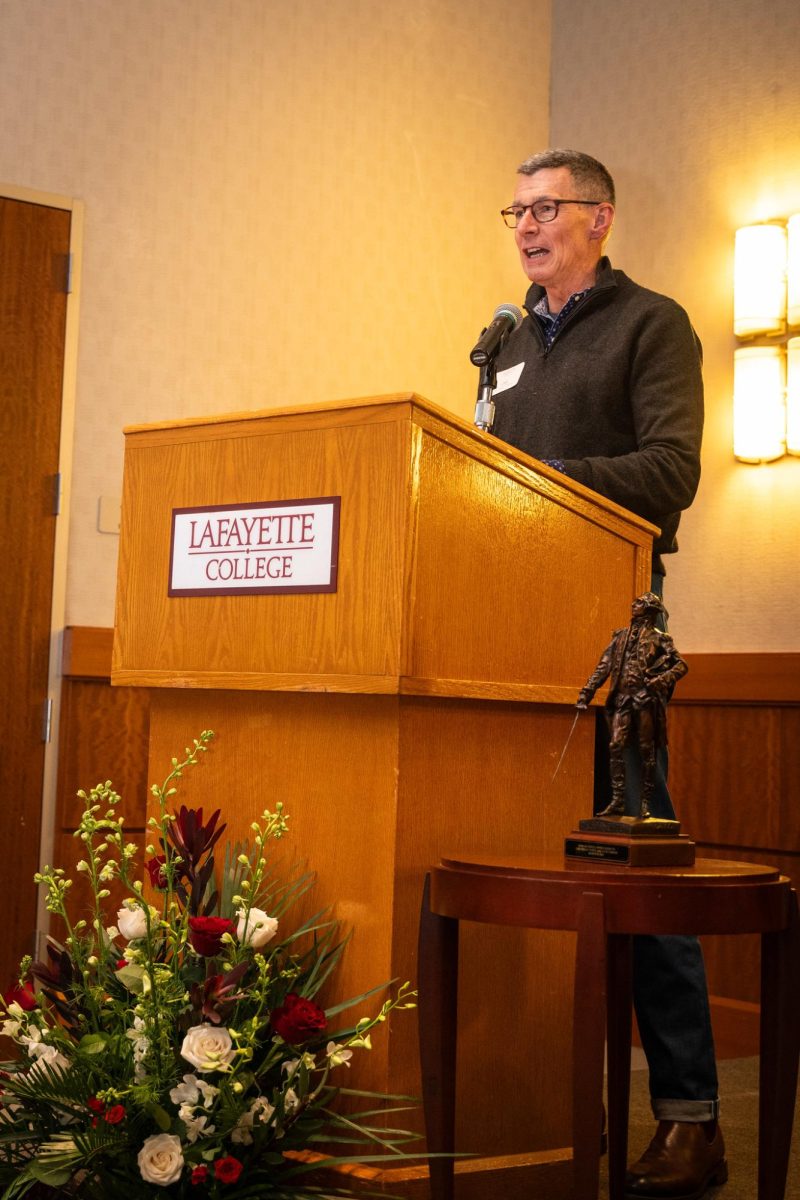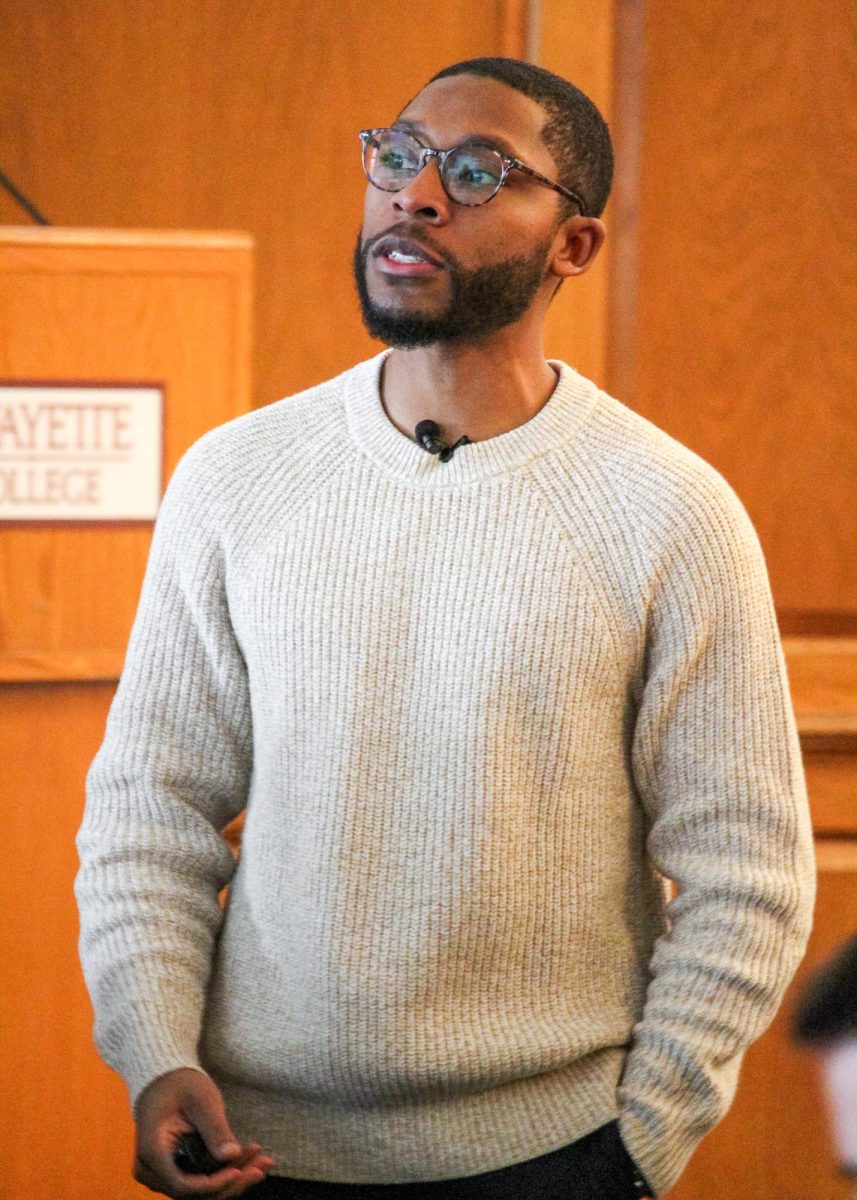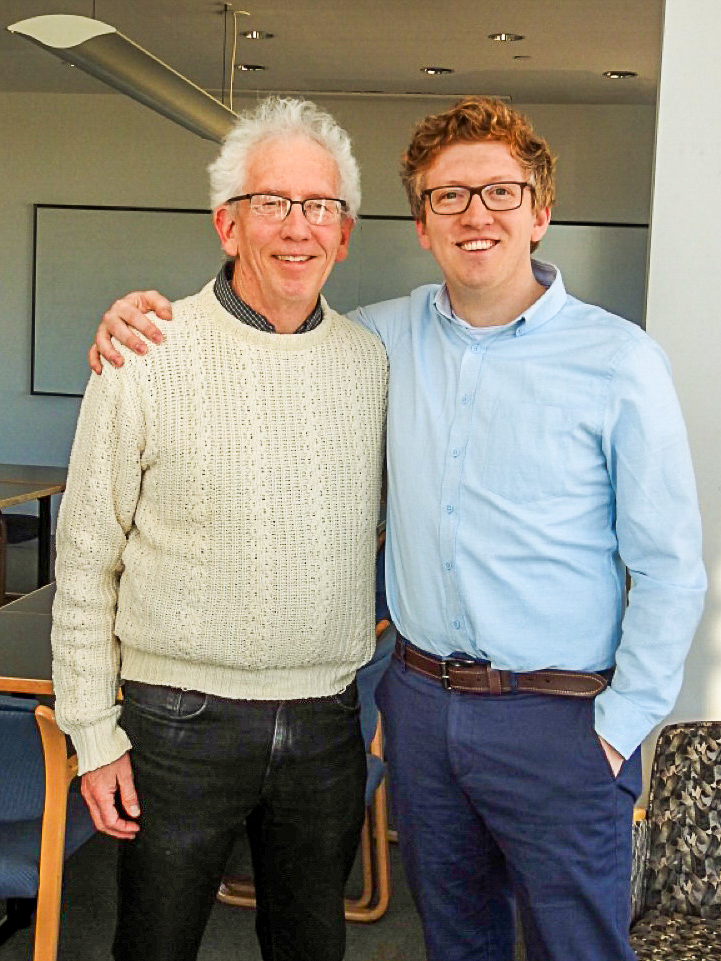Professors lack job stability and benefits
Jessica Redding, a part-time professor of Psychology at Lafayette who is currently six months pregnant, may not have a job at the end of the year.
As a part-time professor, Redding does not qualify for benefits or job security. Neither do Naoko Ikegami or Richard Shupp, both of whom have taught at Lafayette for nine and 23 years, respectively.
They are what is known as contingent faculty, those who do not have a long term commitment from their school to employ them and are not entitled to benefits. The plight of contingent faculty has been a key issue in higher education across the country.
At Lafayette, the issue was recently addressed by Professor of German Margarete Lamb-Faffelberger during last week’s town hall meeting.
“We exploit part-time instructors and their knowledge and give them next to nothing,” Lamb-Faffelberger said. “They of course go and look for greener pastures, and we [Lafayette] have to reinvent the wheel and start over again.”
President Alison Byerly told Lamb-Faffelberger that she will bring the issue up with the Presidential Working Group on Faculty Salaries. About week later, however, Lamb-Faffelberger she was told by the provost that the working group will not consider part-time issues, she wrote in an email.
While full-time professors at Lafayette and across the country are paid a salary plus benefits, adjuncts or part-time professors are paid on a per course basis, with no additional benefits. The difference in pay for full-time and part-time faculty at Lafayette is significant, according Dean of Faculty Robin Rinehart.
Full-time professors at Lafayette are paid an average of $129,645 per year, associate professors average $94,473, assistant professors average $73,449 and instructors average $60,948, according to the Chronicle of Higher Education. Part-time professors are not on that list.
Lafayette adjuncts are paid typically between $4,000-4,500 per course, Rinehart said. At two courses taught per semester, that totals $18,000-20,000 a year. Rinehart said that full-time and part-time faculty members have different responsibilities, which accounts for the difference.
“For full-time faculty, there’s the expectation that they’re doing their teaching, but also their research, and also service to the college within their profession, so there are a lot more responsibilities associated with it,” Rinehart said. “When someone is teaching a course…there’s not as much responsibility associated with it as a full-time job.”
While part-time professors like Redding and Ikegami acknowledge that in many cases full-time employees may need to devote more time to developing courses and advising students, they believe that the time and effort they devote to their courses is also significant, especially since they often teach the classes that tenured faculty prefer not to teach.
“Full time professors like to be able to teach upper level seminars that are in their areas of expertise,” Redding said, who teaches a introductory lab course. “This is a basic intro lab, so people might be a little reluctant to teach the courses that the part-time professors are teaching.”
The pay provided for part-time faculty at Lafayette is roughly similar, if not slightly better than that of other nearby institutions, according to Redding, Ikegami and Shupp, all of whom have worked part-time at other schools, including Lehigh University.
When it comes to benefits, this may not necessarily be the case. According to Shupp, who is a part-time professor of Spanish, schools like Penn State provide some benefits that Lafayette does not.
“I taught [at Penn State’s Northampton County campus] part-time for five years concurrent with my time here, and after a certain number of hours of teaching, they were required to give you a retirement plan,” said Shupp, adding that he wishes Lafayette had a similar plan.
A lack of benefits is particularly relevant to Redding, as she must rely on her husband’s benefits during her pregnancy.
“[His health insurance] only covers like eighty percent of the hospital stay. So that’s still a big chunk of money,” Redding said. “If I was able to have a second policy, it might cover the remaining.”
Redding, due in the spring, is also worried that she will not have accrued the necessary 1,250 hours of work needed to take a protected family leave after giving birth.
“After all is said and done, all my prep work and everything, I will have worked about 1,000 hours in the last year, so I don’t qualify for that leave,” Redding said. “So basically, I will be replaced.”
Ikegami, a Japanese professor, also worries about the security of her job. Like Redding, Ikegami relies on her husband, a full-time Lafayette professor, for his benefits. To secure her job, she has to find ways around the system.
“Last year I was out of country, so I had to find somebody to take care of my classes,” Ikegami said, noting that she found a friend to take care of her classes under the condition that she would be coming back.
Shupp is less concerned about benefits because he is retired and receives a pension and social security.
“But if I were in my fifties and trying to get by and not having medical coverage or some of the other benefits, it would be tough,” Shupp said.








































































































